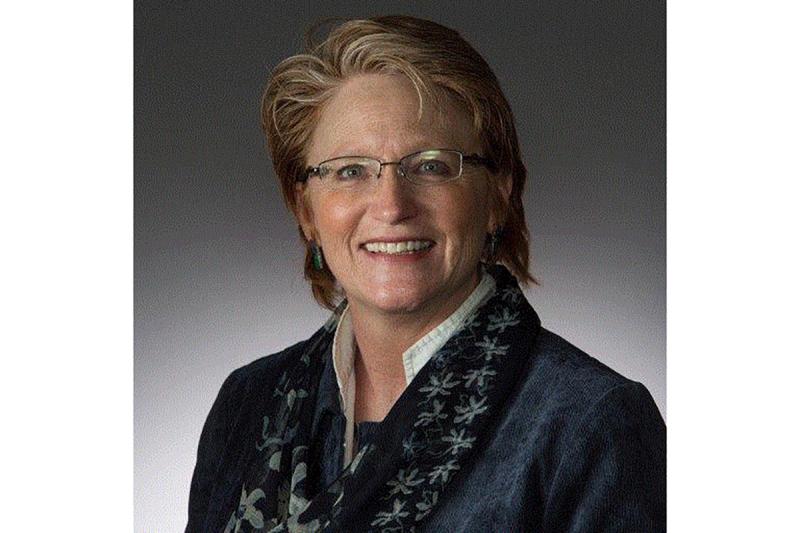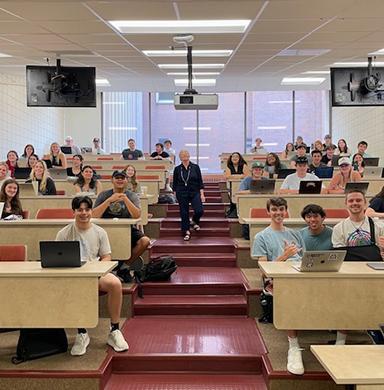Storytelling, Shaving Cream and Slime: Why Students Love Professor Nancy Sasaki
The microbiology professor and DU alum brings science to life with her thought-provoking and engaging style of teaching.

It’s not uncommon to find students writing children’s books or interacting with shaving cream, Play-Doh and slime molds in Nancy Sasaki’s classroom.
Sasaki has been bringing science to life in the University of Denver’s Department of Biological Sciences since 2008. Her history with the department goes back even further, having earned her bachelor’s and master’s degrees in biological sciences from DU in the late ’80s.
As a teaching professor, Sasaki teaches microbiology
classes to both majors and non-majors. While her teaching style differs somewhat depending on who’s in her class, Sasaki encourages every student to “wonder, have fun and be curious about the material.”
In addition to teaching, Sasaki served as associate dean in the College of Natural Sciences and Mathematics from 2011 until 2019 and has been involved in the Office of Teaching and Learning, the Women’s Leadership Council and the Equity in STEM (E-STEM) program. She is also a researcher, having studied both scientific topics and science teaching.
Her unique way of teaching and her supportive, engaging demeanor has made for an enjoyable classroom experience that students recall fondly. Here are just a few of the reasons why she has made a difference in so many students’ lives.
Her ties to DU run deep—and it shows.
Sasaki has never strayed far from DU, thanks to a series of fortuitous opportunities.
Growing up in small town Center, Colo., Sasaki was the first in her family to attend college. After graduating with a bachelor’s degree in 1985, she returned to campus to pursue a master’s degree. It was then that she met Jim Fogleman, who taught genetics and biostatistics at DU—but retired this spring—and he offered her a graduate teaching assistant position.
After finishing her master's, Sasaki began her teaching career in New Jersey at the high school level before she and her husband moved back to Denver, and she was offered a job in August 2008 at the institution where she first found her love for microbiology.
“I just believe that if you’re open to these opportunities that good things will come to you,” she says.
It's that deep connection to the university community that shines through in the passion she brings to her teaching, her students say.
“The ability to facilitate deep learning across learning styles and academic interests is essential for student success, so professors who are not only passionate about their field but also immersing their students in their classes are a true asset to the school,” says biology major Mimi Morrison, who has taken two classes with Sasaki.
She is an “enthusiastic, engaging and inspiring” professor.
Claire Sweeney, a student in the Daniels College of Business who took Sasaki’s three-quarter-long course Living in the Microbial World, believes professors like Sasaki “inspire students to reach their full potential.”
“Professor Sasaki is by far my favorite teacher at the university; her love and excitement for students is unmatched. This passion translates into a supportive and engaging learning environment where students feel comfortable and motivated,” she says.
Sasaki says she intentionally teaches without focusing on memorization and rather encourages students to work together to build solutions to the problems posed in the classroom.
“I want to hear how you phrase things, how you think about things,” she says.
Hanna Hernandez Lindner, who took Sasaki’s microbiology course, describes her teaching style as “inclusive, thought-provoking and collaborative.”
“She sparks discussions in the classroom so that students can share their knowledge into thoughtful concepts. These discussions have helped me think of the content more thoroughly as well as connecting with my classmates and listening to their thoughts to gain more insights,” she says.
She makes complex science topics fun and relatable.
By participating in a drawing activity using shaving cream and paint dye, Sweeney was able to better grasp what would have otherwise been a challenging topic in Sasaki’s class.
“This hands-on activity was not only fun but also allowed us to visualize and creatively express complex ecological concepts,” she says.
Morrison’s favorite moment in her class with Sasaki involved slime molds.
“It was so fun to, as a class, be ubiquitously blown away by this mysterious organism—a common experience in class with Dr. Sasaki, who consistently emphasizes the wonders of microbial life,” she says.
Sasaki intentionally creates collaborative, creative environments in her classes to get her students to think in different ways. For example, she has her non-major students at the end of the year write a science-related children’s book.
“I love reading them, and they have all of these different, unique stories,” Sasaki says. “They have to learn again how it really works and then how to communicate that to a kid.”

